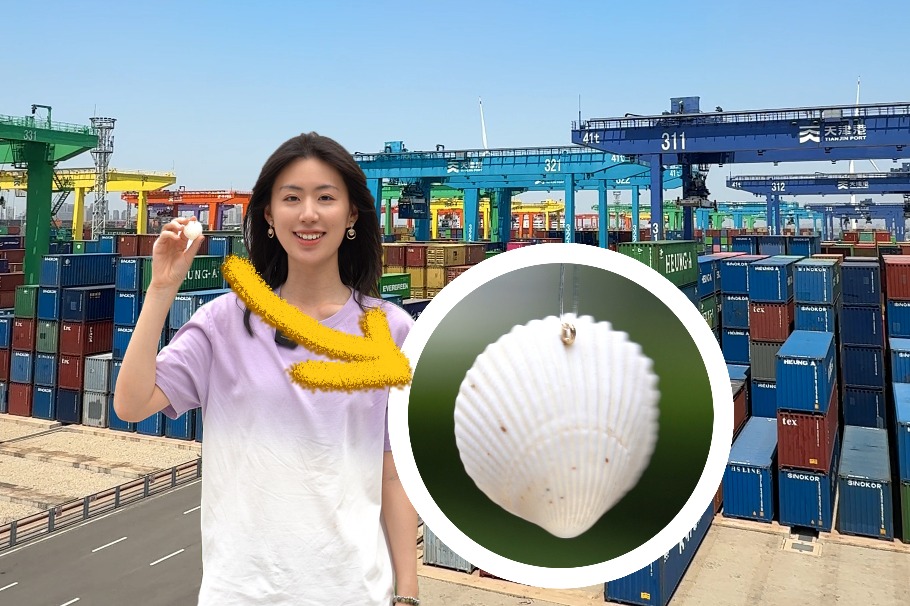Anchors of peace
China and ASEAN nations can and should manage their differences and maintain maritime stability


Over the years, China and the Association of Southeast Asian Nations have explored and established a range of bilateral and multilateral crisis management mechanisms to address and resolve the South China Sea issue. These have played a positive role in maintaining regional stability.
Shortly after the 1995 Meiji Reef incident, China and the Philippines signed a bilateral agreement on the principles for a code of conduct and set up working groups on confidence-building measures, fisheries and maritime environmental protection. In January 2017, China and the Philippines formally established a bilateral consultation mechanism on the South China Sea, under which 10 meetings have been held to date. Both sides agreed to use this platform to properly handle differences, prevent maritime accidents, and enhance dialogue and cooperation. This mechanism has also played a vital role in facilitating a provisional arrangement regarding the Ren'ai Reef situation.
China and Vietnam have established three mechanisms on maritime issues: the working group on the delimitation of sea areas beyond the mouth of Beibu Gulf, the expert working group on cooperation in less sensitive marine areas, and the working group for consultation on maritime joint development.
On Oct 16, 2024, China and Malaysia held their first bilateral dialogue on maritime issues, during which the two sides exchanged views in depth on current maritime developments and related issues and reached a consensus on advancing practical maritime cooperation.
At the multilateral level, in September 2016, China and ASEAN countries issued the Joint Statement on the Application of the Code for Unplanned Encounters at Sea in the South China Sea and the Guidelines for Hotline Communications among Senior Officials of the Ministries of Foreign Affairs of China and ASEAN Member States in Response to Maritime Emergencies, demonstrating their shared commitment to managing differences, preventing risks, and preserving peace and stability in the South China Sea.
Despite some progress, crisis management in the South China Sea faces mounting challenges due to the United States' unwanted involvement, its continued push for strategic competition with China, and a lack of mutual trust between some of the regional parties.
As the strategic rivalry between China and the US intensifies, their geopolitical competition is escalating and it is having spillover effects, exacerbating bilateral conflicts between China and some ASEAN claimant states over sovereignty and maritime rights. This has posed major obstacles to regional stability and crisis control. The US has increased its involvement in the South China Sea affairs, courting Southeast Asian nations across political, military, diplomatic and economic fronts, further adding to the region's uncertainty. Japan, Australia and some European countries have also become more involved in the South China Sea disputes.
A few ASEAN countries remain wary of China's South China Sea policies and behavior. The narratives of "China's maritime expansion" and the "China threat in the South China Sea" still hold sway in parts of the region. Meanwhile, the arbitration case on the South China Sea continues to cast a long shadow, with some ASEAN claimants citing the illegal ruling to justify unilateral maritime actions. These moves have heightened tensions, eroded mutual trust, and impeded progress in crisis management, rendering existing mechanisms less effective.
The Code of Conduct in the South China Sea is widely seen as the most important mechanism for managing crises, advancing cooperation and shaping maritime governance between China and ASEAN. Any disruption in the COC negotiations will inevitably undermine efforts to manage crises. Some ASEAN claimants have attempted to maximize their interests by rejecting China's reasonable proposals and making excessive demands. The US, for its part, has sought to interfere in the COC process through these countries and compete with China in setting regional maritime rules.
ASEAN's primary resources for addressing the South China Sea issues are institutional and normative, including its emphasis on the "ASEAN Way" and use of ASEAN-led meetings as platforms for coordinating positions and discussing disputes. However, this normative influence has clear limitations. Policy differences among ASEAN members on the South China Sea matters restrict the bloc's ability to play a larger role in crisis management.
Given the current situation and challenges, several steps can be taken to enhance crisis management in the South China Sea.
First, existing mechanisms should be fully leveraged while the crisis management system is further enriched and improved. China and ASEAN have already established several mechanisms for crisis control, confidence-building and practical cooperation. These platforms must be actively utilized, especially to maintain open communication channels during emergencies. At the same time, new mechanisms could be explored, such as a framework for crisis management between the Chinese and ASEAN coast guards modeled after the Code for Unplanned Encounters at Sea.
Second, efforts must be made to implement the Declaration on the Conduct of Parties in the South China Sea and advance consultations on the COC. China and ASEAN members should overcome obstacles and external interference, press ahead with the COC negotiation process while continuing to implement the DOC, and ensure that the COC becomes an "anchor of stability" for the South China Sea. The two sides should work to establish rules and norms for behavior at sea, which would constrain unilateral actions and reduce the influence of extraterritorial factors.
Third, pragmatic cooperation in less sensitive marine areas should be prioritized to build mutual trust and align interests. China has consistently advocated a functional cooperation approach based on the principle of seeking common ground while shelving differences, in an effort to build up mutual trust and the integration of interests through cooperation. Drawing on the cooperation models in other enclosed or semi-enclosed seas worldwide, efforts should focus on marine ecology, environmental protection, navigational safety and fisheries conservation. In particular, practical cooperation should be intensified to tackle issues such as resource depletion, biodiversity loss and marine plastic pollution, as part of efforts to expand the "shared interest pie" between China and ASEAN members.
Fourth, military confidence-building measures between China and ASEAN should be promoted. Trust-building between navies and coast guards is critical for crisis management. China should continue conducting joint maritime exercises with ASEAN members and step up communication with defense departments through platforms such as the ASEAN Defense Ministers' Meeting, the mechanism of the China-ASEAN Defense Ministers' Informal Meeting and the ASEAN Regional Forum. China could also support or accept proposed ASEAN initiatives for military confidence-building measures, such as Guidelines for Maritime Interaction and Guidelines for Air Military Encounters, and explore with ASEAN the possibility of establishing crisis management frameworks such as a maritime accident prevention agreement or encounter rules between coast guards.
Managing the territorial and maritime disputes in the South China Sea between China and some of the ASEAN members and preventing misjudgments are vital to preserve regional peace and stability.

The author is a research fellow at the Institute of International Strategy at the Party School of the Central Committee of the Communist Party of China (National Academy of Governance). The author contributed this article to China Watch, a think tank powered by China Daily. The views do not necessarily reflect those of China Daily.
Contact the editor at editor@chinawatch.cn.

































